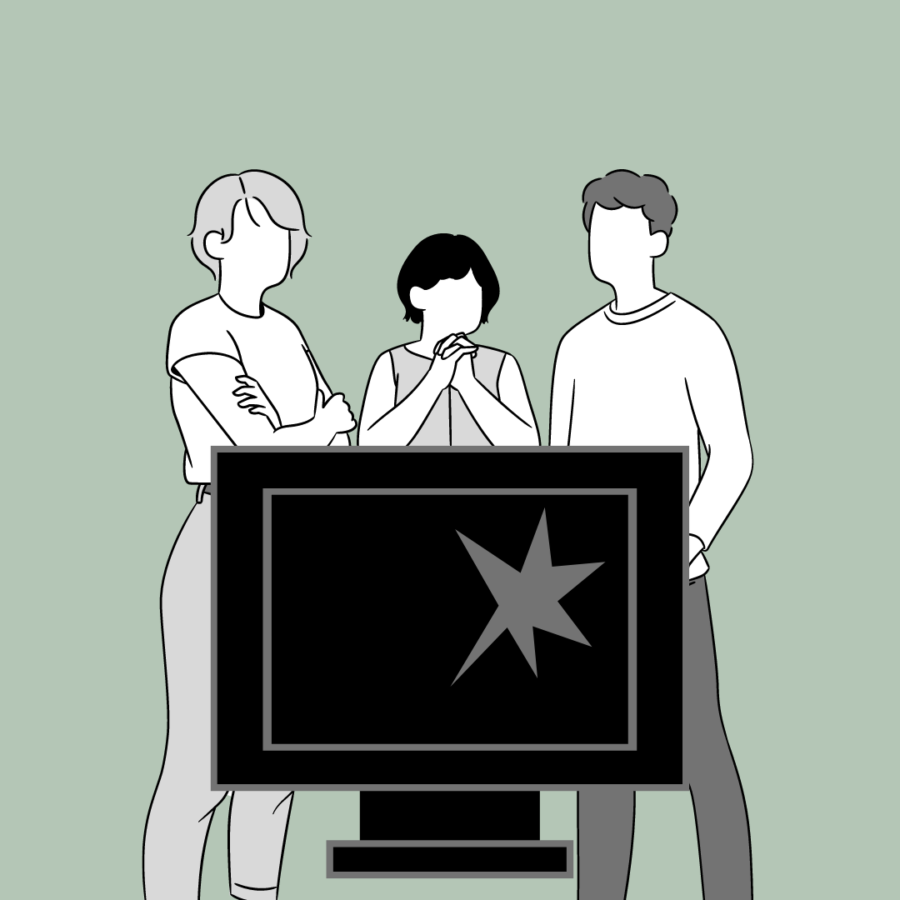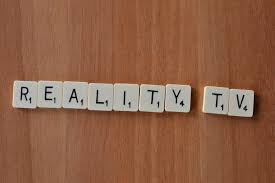Misleading depictions of mental illness in TV shows prove dangerous to youth
Romanticizing mental illness in television shows can have detrimental effects to teenagers
March 24, 2022
“I didn’t eat for three days so I could be lovely.”
These are the words of Cassie Ainsworth, a character from Skins, a British tv show that aired from 2007 to 2013. Skins centers around the lives of teens and tackles many controversial subjects, such as drugs, teenage pregnancy, and mental illness. As you may guess from the quote, Cassie has an eating disorder that impacts her body image and self esteem, becoming the focal point of her character’s subplot.
While the show’s intentions to delineate the stigmatized struggles of teenagers may be positive, Skins’ approach to portraying eating disorders may be counterintuitive, or even dangerous to youth.
“As a teenager I watched her on the small, square TV in my bedroom with her skinny frame, elfin features and eclectic clothes and I wanted to be just like her. I was not disturbed by the anorexia storyline. I was inspired by it,” Megan Sutton wrote about Cassie in a Vice article.
Unfortunately, Skins isn’t the only teen tv show that somewhat fails in its attempts to increase awareness of mental illness. The romanticization and glamorization of mental illness as an aesthetic has become increasingly common in the media that young people consume. Instead, these misleading portrayals of eating disorders, depression, anxiety, and other mental illnesses can do more harm than good, especially for children who are on the cusp of becoming teenagers.
Innocent Children Programming Isn’t Engaging to Older Youth
Although G-rated films and children’s television programming itself rarely touches upon mental illness, older children, ranging from ages nine to 12 often aren’t watching these shows. TV shows advertised towards this age group, such as Jessie or Victorious, are often full of oddities, repetitive humor and simple plotlines, which is why most older kids don’t find such shows appealing.
“Shows like Jessie are less relatable to teens in today’s society compared to 13 Reasons Why, thus making shows like Jessie seem to be made for just younger kids,” DVHS junior Shirin Wadhwa said.
Take Jessie for example. In the first episode, Jessie Prescott, who has just moved to New York City from a small town in Texas, gets hired as a nanny for the rich Ross family. The episode is full of mayhem, from the four kids who attempt to escape the house with a helicopter, to Jessie accidentally breaking Emma’s science project. Although Jessie fixes the project, Emma admits that she wishes her parents weren’t so busy and had time for her, leading Jessie to voice this concern to the parents and getting fired. The episode ultimately ends with the parents attending Emma’s science fair and Jessie being rehired, winning the hearts of all of the Ross children – the ending we all expected.
While Jessie may be humorous, the idea of all plotlines being resolved in a single episode not only lacks complexity from a story standpoint, but also lacks relatability. In reality, conflicts in life don’t always end with everyone eating ice cream in celebration, but further issues arise that will need to be resolved over time. TV shows like Jessie depict life unrealistically, shielding teenagers from the problems in society like social inequality that they should be aware of.
This light-heartedness is often not as interesting to older children who are growing into adolescence. Adolescence is a time when darker themes start to appeal to children who are in the transition to becoming a teen. Common traumatic events experienced by most teens include physical fighting and bullying. According to a study done by the World Health Organization on 40 developing countries, an average of 42% of boys and 37% of girls were exposed to bullying. The Boston Children’s Hospital explains that witnessing or experiencing an act of violence in school or the community and responding with intense fear and helplessness can cause children to develop post-traumatic stress disorder (PTSD). Violent outbursts are a normal response to traumatic events and are typically a symptom of PTSD, which can escalate into violent situations, suicide even, if left untreated. At this age, teens want to learn more about these sensitive topics so that they know what to do if they were ever in that kind of situation.
Ultimately, tweens are often left with shows that deal with darker issues, such as suicide, rape and drugs. These TV shows are a stark contrast to the age-appropriate Disney and Nickelodeon shows one may watch as a younger child.
Misleading depictions of mental health issues in shows commonly watched by teens
Some of Riverdale’s storylines include suicide, addictive drugs and mental trauma, but these topics are never properly explored in the show. Although the lead character Betty Cooper has the exterior of a perfect girl-next-door, she’s seen to struggle with anger issues, as she gets scars from clenching her fists, and she even engages in self harm. However, rather than naming the mental illness she suffers from, the show portrays it as the ambiguous term “darkness.” Instead of delving into her past traumas and destigmatizing mental illness, they sexualize her, as she even dresses up in black lingerie and a wig to coerce another character, Chuck Clayton, to admit a lie. Even if the show’s intention is not to depict positive representations of mental health and trauma, Riverdale could be a child’s first exposure to self-harm and trauma, so misleading depictions of mental illness can further stigmatize it.
13 Reasons Why, based on the novel of the same name by Jay Asher, is another instance of romanticization of suicide and depression. The Netflix show centers around the suicide of high schooler Hannah Baker, who recorded videos explaining her reasons for committing suicide and blaming the people who brought her to that point. Instead of encouraging seeking help and providing resources, this show focuses on blaming others and reinforces the idea that suicide is a viable solution for those facing depression. While the show’s intentions may be to initiate conversations about suicide, scholars have said otherwise. A study of suicide rates among Americans aged 10-17 found a 28.9 percent increase in April 2017, the month after 13 Reasons Why was released.
“[13 Reasons Why] sucks you in, which is great from a television standpoint, but from an impact standpoint, it is concerning,” DVHS Health teacher Athena Agustin said. “The lines can become blurry between fiction and reality, and it’s not just difficult for teens, but even adults.”
The fine lines between fiction and reality can be discerning for many people, especially people struggling with suicidal thoughts. A study described in the APA’s 2003 Annual Convention found that media likely played a role in 10% of suicide deaths in people younger than 25 — “either by giving youths the idea to commit suicide or by providing youths already contemplating suicide with information about a specific method.” Researchers call this idea “suicide contagion,” in which depictions of self-harm can encourage people, particularly youth, to copy the method.
These depictions are also further reinforced by social media, which can already hold unrealistic expectations and standards that harm the teenage demographic. With children as young as 11 years old downloading apps like Instagram, Snapchat, and TikTok, these children are vulnerable to content about shows like 13 Reasons Why. Although many of the children using these apps are young, there aren’t any barriers that prevent them from clicking on an Instagram post that glamorizes mental illnesses like anxiety and depression. Even though 13 Reasons Why is rated TV-MA, social media can cause young minds to be exposed to such issues within these TV shows for the first time, especially since many of them have not been exposed to this content yet from a parent or trusted supervisor.
Impact of false depictions of mental illness on teens
While some romanticized depictions of mental illness may be rooted in good intentions, it’s incredibly important for television writers, producers and directors to be mindful of how their portrayals can deeply affect those who are watching, especially those who are just children, as for many, this can be their first time being introduced to such topics.
Young children often lack maturity as their brains are not fully developed, so introducing them to heavier topics, such as mental illness or drug abuse, can often have unintended consequences.
“There’s a concept in psychology called observational learning that talks about modeling and how we might see a behavior and then emulate that behavior. And so we certainly can imagine that teenagers could see things on television and copy what they see,” DVHS AP Psychology Teacher Melanie Grossheider said.
According to the American Academy of Pediatrics (AAP), “Children are influenced by media – they learn by observing, imitating, and making behaviors of their own.” (2001, p.1224). If children are exposed to television that sensationalizes mental illness or the topic for comedic purposes, they could potentially get the wrong idea about it.
“I think there’s a fine line at what age you want to introduce [mental health issues] to younger kids, as they might copycat some of these symptoms without fully understanding them,” DVHS counselor Robyn Blackburn explained.
Yet this doesn’t just apply to children, but teens and adults as well. Romanticizing mental illness can strip mental illness of its agony and debilitating effects, not only on the sufferer, but also on their family and friends. Mental health problems are instead seen as “tragically beautiful” and even desirable.
“There might be some people who are starving for connections with other people, and they might use mental illness as a route to get some of those connections,” Agustin said.
It’s imperative that the media doesn’t send the wrong message at the benefit of heightening the climax of their plot. Sometimes, getting lost in these fictional stories can make us lose touch with the reality that entertainment companies produce these shows to make a profit. The more the show can hook viewers in, the more money the company makes.
“The fact that a show is on a streaming service doesn’t imply that, somehow, the known consequences of mass media, observed since at least 1774, have been suspended,” Stephan Marche writes in a New Yorker article, “But here’s the darker truth of this moment: 13 Reasons Why was a hit. No number of potentially associated deaths is going to change that.”
What can be done to accurately depict mental health issues in the media?
Although many of the depictions of mental illness in the media are misleading, this does not mean that mental illness should not be represented in the media at all. If presented in the right way, TV shows covering topics about mental health can help de-stigmatize such illnesses and educate people about mental health.
Grossheider exemplifies this with a common children’s TV show: “Winnie the Pooh famously portrays a variety of characters with different mental illnesses, and the writer supposedly did that to give young children a language to talk about their own mental health issues [For example], they could say, ´I feel like Tigger today´ if [they’re] not able to sit still. [Giving] kids a way to identify characters and perhaps recognize their own behavior patterns seems to be a very positive thing to do.”
The issue arises when viewers get false information about what having a mental illness is really like through the shows that they watch. To solve this issue, the media should strive to incorporate more examples of real-life people coping and dealing with depression, anxiety, etc, rather than using fictional characters to educate youth about these topics.
“I prefer real-life accounts when I watch or read about mental illness,” Agustin said. “Whether it [is] a documentary or an autobiography, that’s going to give a more accurate window into what people are really dealing with.”
Agustin cites NBA player Kevin Love as a positive example of someone who raises awareness about mental health by discussing his struggles with anxiety and depression. Not only did he establish the Kevin Love Fund with the goal of “providing the tools to achieve physical and mental well-being,” but he has also spoken in numerous articles and interviews about his experiences, providing youth with a firsthand, non-fictional account of how mental illness can affect an individual. Love is far from the only example of celebrities speaking out to break the stigma of mental illness. Some other examples are Chris Evans, Demi Lovato and Kendrick Lamar.
“I think it’s important that representation exists in the media so that your illness is not stigmatized because if you can’t think of a good and healthy example of someone who is like yourself, [then] it’s really hard to imagine yourself moving forward,” Grossheider explains.
However, it’s important to avoid the dangers of a single story, especially for mental illness. Mental illness can affect everyone in different ways and to varying degrees, so documentaries and reality television shows that depict people from diverse backgrounds with mental illness, not just celebrities or the rich, are incredibly important. Mental illness should not be glorified, and depictions should include all aspects, including negative aspects, of the disorder.
“It’s only when you see negative consequences of a behavior that you are unlikely to avoid copying it,” Grossheider explained.







